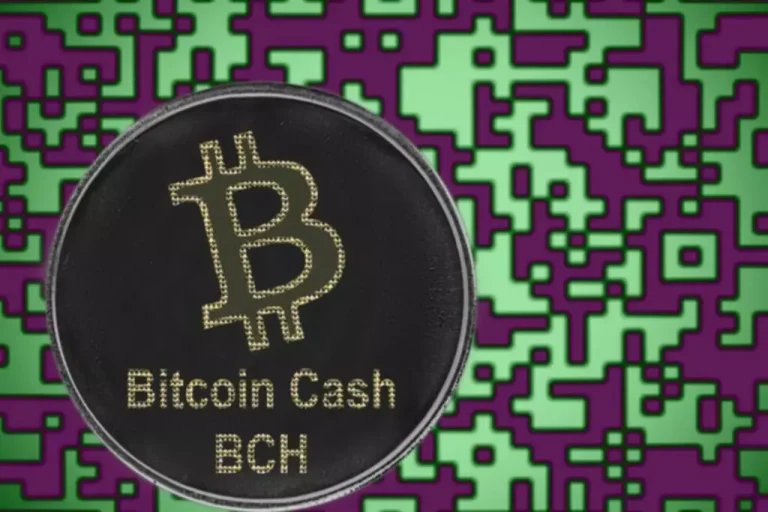What Are Blockchain Bridges and Their Types?
However, keep in mind that this process incurs transaction fees and exposes you to price volatility if you don’t utilize a blockchain bridge. Blockchain bridges are not just important for users; they are also essential for the development of the crypto ecosystem as a whole. MSc in Computer Science, BSc in Smart Engineering, and BSc in Economics and Statistics. He holds certifications from Duke University in decentralized finance (DeFi) and blockchain technology. Bridges use different mechanisms, or actors, that play the role of verifiers between blockchains to enable communication and overcome the trust boundaries.
Blockchain bridges provide opportunities for user growth, asset production, transfer, and scalability. They also lower transaction fees and enhance speed, especially https://www.xcritical.in/ with layer two solutions. Every blockchain project features specific defining parameters unique to the project, which create problems with interoperability.
Each blockchain project has its unique characteristics and standards, which can create interoperability challenges. Blockchain bridges address this issue by enabling the movement of transactions and data sets in a trustless, bidirectional, or unidirectional manner. They achieve this by facilitating the exchange of decentralized identities, off-chain data, and intelligent contract calls. The blockchain bridge by Binance serves as a bidirectional bridge between Ethereum and the main Binance chain.
Fees soared, and all transactions on Ethereum took between hours and days. The ability to port tokens from a congested or high-fee blockchain to a high-performance blockchain can be revolutionary. Low-fee and high-performance blockchains are especially beneficial to Web3 gaming projects and microtransactions.

Bridges are either custodial (also known as centralized or trusted) or noncustodial (decentralized or trustless). The difference explains who controls the tokens that are used to create the bridged assets. All wrapped bitcoin (WBTC) is held in custody by BitGo, making it a centralized bridge.
These networks usually leverage the security of the underlying blockchain; through the use of locking and dispute mechanisms, users are guaranteed that routers cannot run away with user funds. Because of this, liquidity networks like Connext are likely a safer option for users who are transferring large amounts of value. It’s worth noting that the development of blockchain bridge technology is an ongoing process, and new types or variations may emerge as the industry evolves. Every kind of blockchain bridge serves specific purposes and caters to different use cases, offering unique trade-offs between trust, security, and decentralization. It’s essential to consider the characteristics of each bridge type when choosing the most suitable solution for a particular blockchain interoperability requirement.
The holy grail of bridging protocols remains seamless crosschain interoperability while minimizing central points of failure. As such, considerable research is underway to improve existing bridge implementations and create new ones that complement the principles on which crypto itself was created. A crosschain bridge — also known as a blockchain bridge or DeFi bridge — is a protocol that enables the transfer of data between blockchain networks. Examples include an asset’s price on a decentralized exchange, a smart contract call, a request to transfer tokens between chains or any other arbitrary data.
- A more sophisticated form of token bridge enables a user to perform exchanges between networks.
- However, as blockchain projects and decentralized applications (dApps) grow, the demand for asset interoperability across networks increases.
- It is basically a protocol governed under a centralized approach, operator, or entity.
- Yet, none of these independent networks can natively communicate with each other.
- Consider Bitcoin and Ethereum, two of the most significant cryptocurrencies, each with its unique rules and processes.
- It connects two independent chains or blockchain protocols and catalyses the cross-chain communication of transferring valuable assets and data between them.
We saw rates of just over $2 up to $14 to bridge a small amount of ETH across blockchains. The safest bet is probably to use a well-established bridge, like those covered above. The original asset is frozen, and you’ll get an equivalent token in exchange. Your bridged tokens are backed by the original (now-frozen) coins or tokens.
But, what do you do if you want to make a similar exchange to use a different blockchain? Let’s say you want to exchange ETH on Ethereum Mainnet for ETH on Arbitrum(opens in a new tab). Like the currency exchange we made for EUR, we need a mechanism to move our ETH from Ethereum to Arbitrum. In this case, Arbitrum has a native bridge(opens in a new tab) that can transfer ETH from Mainnet onto Arbitrum. Blockchain bridges solve this problem, enhancing cross-chain smart contract functionality.
Blockchains are independent networks that come with their own set of rules and native assets. A bridge connects, enables, and enhances the transfer of crypto what is a blockchain bridge and how it works assets and data between different chains. In addition, such systems enhance interoperability while enhancing compatibility between different chains.

Web3 has now evolved into a distributed ecosystem due to the introduction of side chains. But both of these original chains (L1) and (L2) scaling solutions come with their unique features and trade-offs. As more blockchain technologies are developed, there is an increasing demand for asset transfers.
Bridges offer a way for isolated blockchain environments to connect with each other. They establish a transportation route between blockchains where tokens, messages, arbitrary data, and even smart contract calls can be transferred from one chain to another. This type of market structure necessitates the need for interoperability between these distinct networks. Many developers have realized this, and the last year has seen an explosion in blockchain bridges that attempt to unify an increasingly fragmented landscape. This has also resulted in a lower adoption rate because applications developed for one network only work on that network. By allowing assets to move seamlessly across different blockchains, these bridges can streamline cross-border payments, reducing transaction times and costs.
Once funds have been committed on the source chain, they are guaranteed to be accessible on the destination chain. Then, by implementing a blockchain bridge between the chains, you can seamlessly share smart contract execution rules, exchange tokens, exchange transaction data and other relevant network information. This happens as the blockchains are not limited to their point of origin after implementing a cross-chain bridge. Although an essential part of a genuinely crosschain future, blockchain bridges present various risks to users and even those who might not have bridged assets. OKX Insights explored these risks in an in-depth analyzing the exploit of the Wormhole crosschain protocol in February 2022. Crosschain bridges rely on smart contracts deployed on both the source and target blockchains.

Laisser un commentaire
Rejoindre la discussion?N’hésitez pas à contribuer !